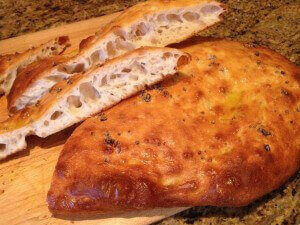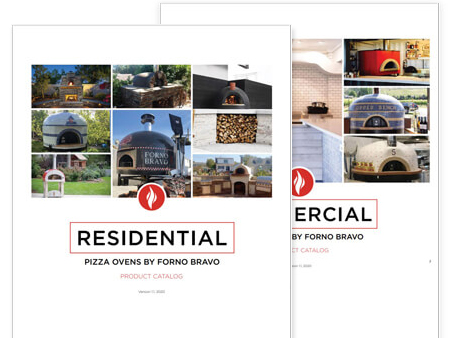Dough Folding and Focaccia
Jun 19, 2012Posted by Forno BravoThere are a number of different flatbreads in Italy, representing a number of different styles. Focaccia from Genoa and in many other locations is thicker, as high as 1″-2″, and softer. Schiacciata found throughout Tuscany is thinner than Genovese focaccia and thicker than a pizza, as is Pizza Bianca found in Rome. In some restaurants and bakeries in Naples and Sorrento, a focaccia is a thin flatbread baked in a pizza oven and lightly topped with perhaps one teaspoon of light tomatoes sauces, salt, and oregano. It’s small wonder the word Focaccia has come to mean so many different things to different people.
My favorite Italian flatbread is Tuscan Schiacciata because it mixes a nice crunch in the crust with a moist and developed crumb—and it is rich with extra virgin olive oil. When we were in Florence, my second daughter and I would stop stop at a neighborhood bakery on the way to school some mornings, and get Schiacciata with olives as an early morning snack. Over the years, I have continued to make Schiacciata at home, both because it is fast and easy to make, and because it is a nice reminder of our time living abroad.
What I want to share today is just how important proper dough folding can be for all bread—even the lowly Focaccia. I found that doing proper folding made a big impact on the quality of my latest flatbread. After bulk fermentation, I folded my dough and let it proof a second time. Then I pushed out the air holes, cut my dough in half and made two really nice flatbreads. I gave them an hour to proof in the baking sheet and then pushed down finger impressions, drizzled the loaves with olive oil and cracked some nice salt on top. It was very interesting to see how nicely the crust and the crumb developed and how much they benefitted from the folding.
My least favorite focaccia is the thicker, softer style, and by giving my dough the time to develop, I was able to make a Schiacciata with a lot more character. Here is the recipe:
1000 grams of all-purpose flour
700 grams of water (70% hydration—wetter than pizza dough)
10 grams of yeast
20 grams of salt
Note that there is no olive oil in the dough.
Enjoy!






